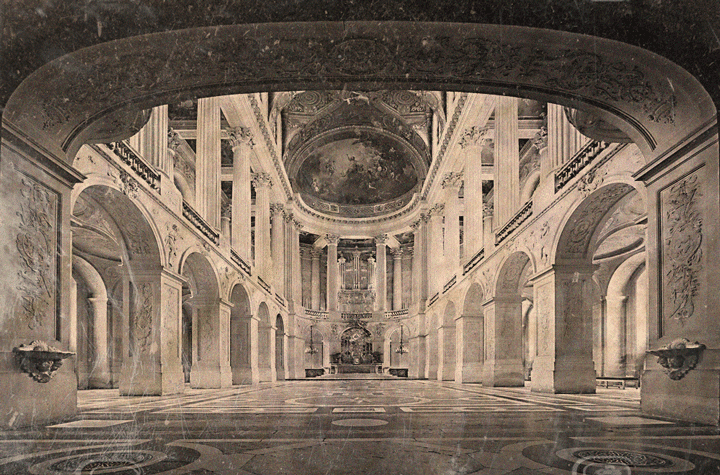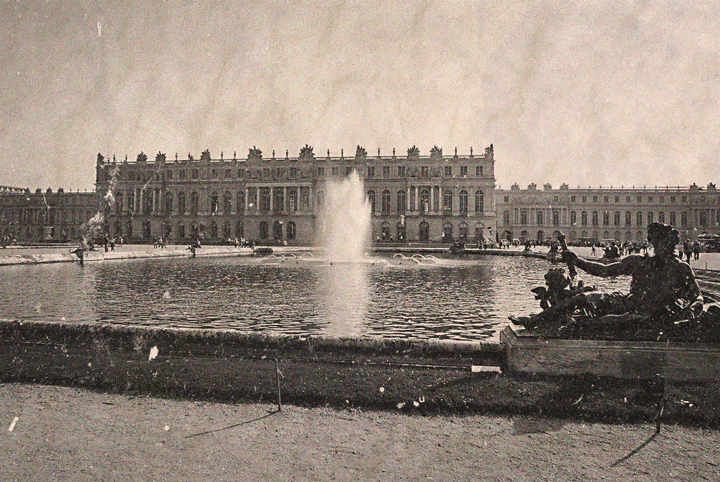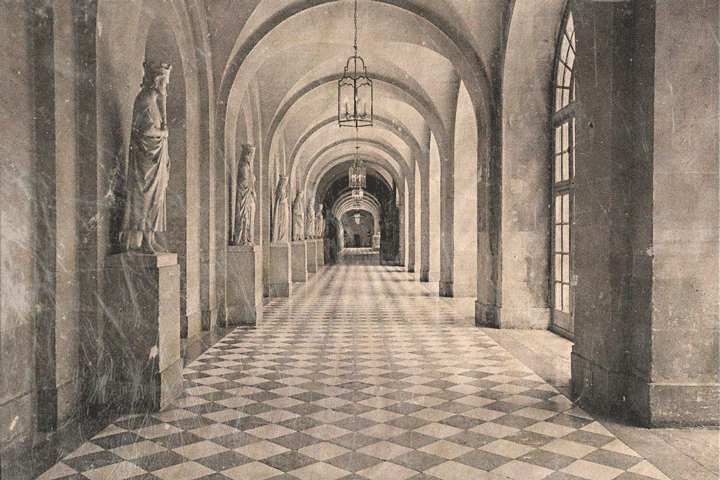Siamese government delegation visits Louis XIV in 1686
From October 22, 2017 to February 25, 2018, an exhibition was held at the Palace of Versailles called “Visitors to Versailles”. It was a fictional account of three visits to the Palace of Versailles, based on historical facts, giving the visitor an opportunity to see and read impressions of travelers or ambassadors and follow in their footsteps around the palace as it was in the 17th and 18th century.
One of the highlights was the coverage of a trip made by Kosa Pan, the Ambassador of Siam.
Ambassador's visit to Louis XIV
The ambassadorial visit to Louis XIV towards the end of 1686 demonstrates the importance of Versailles in international affairs throughout the late 17th century. The magnificence of the reception, the gifts brought by the ambassadors, their retinue, all contributed to a remarkable historical episode.
Kingdom of Siam
In the second half of the 17th century, the kingdom of Siam (modern Thailand) significantly expands its commercial and diplomatic activities. For the king, Phra Naraï, represented by his foreign minister, Kosa Pan, the main purpose of a diplomatic visit is to arouse the interest of the king of France so that Siam could become the preferred partner of the East India Company . The Siamese king is also keen to consolidate the military assistance he has already acquired. For Louis XIV, the aim is to reaffirm France's position as a kingdom whose influence extends far beyond the European continent. It could also lead to a commercial victory over Holland, which has a lot of trade influence in Asia.
Travelogue of Kosa Pan, Ambassador of Siam
The text that follows is a fictitious story, made up of fragments and testimonials, the origin of which could be seen at the above-mentioned exhibition.
September 1, 1686: at the gates of the palace
What a strange paradise this land of France is! In the course of two months since our arrival in Brest, we are introduced to characters and artists, each even stranger than the next. We observe with increasing curiosity the strange ways of these people so sure of themselves... And yet everything in these preparations for an audience with the king leads me to believe that we will long remain at the pinnacle of the splendor and novelty of the French court have not reached.
It is indeed difficult not to be distracted from the crucial moment of our visit, the handing over of the letter from Phra Narai, our king, to the king of France. No doubt this is what France is about: having overcome all the perils of a journey by sea, here I am, unable to speak of anything but dress, lavish furnishings and unfamiliar manners. Yes, Versailles is a paradise inhabited by richly dressed figures with proud and curious looks. And soon we will have to introduce ourselves…

(vichie81 / Shutterstock.com)
September 3, 1686: 1500 spectators accompany us to their king
I have only now managed to return to this journal because all the turbulence of this visit was so exhausting. It would take an entire book for me to describe in detail all my impressions during those few hours. But I will try to at least outline the facts of the visit.
As agreed, our host, Marshal La Feuillade, comes to collect the three of us, that is, myself, my “Uppathut” and my “Trithut”. La Feuillade has tried with moving clumsiness and finally in vain to pronounce these words of our language correctly: he calls it 'second and third ambassador'. The Marshal takes us in the king's gilded carriages from our Parisian hotel, which in comfort can easily be associated with a real palace, to Versailles.
Upon our arrival, we are immediately plunged into a chaotic bustle that requires all my attention to navigate while maintaining decorum. We cross the field, where curious spectators crowd in from all sides. They seem to have come from all over Europe to admire our procession. In front of us in the procession, 12 “Swiss” carry our king's letter on a kind of stretcher in a dignified manner. Next to us, our staff walks with the traditional umbrellas, which apparently make a big impression on the spectators.
Approaching the stairway in front of the ambassadors, one cannot help but be stunned by this majestic sight. One could justify crossing oceans to admire nothing but this. But unmoved we move on. The drums and trumpets, with their oddly harmonious shapes, smother the comments of the onlookers as they point to our outfits. One thousand five hundred pairs of eyes testify to the importance of this day and guide us through salon after salon, which surpass each other in splendor, to the hall where the king awaits us.
We enter what I can only describe as a cage of light, where the sun's brightness—relatively dim in this part of the world—is reflected in the surrounding mirrors and the sheer silver of the furniture. At the very back of this room, the king seems miniscule. In our own tradition, we perform three extended bows as we approach. This gesture, a show of great respect, never fails in our native land.
On a raised platform, nine steps high, accompanied by his son and nobles of the court, in an outfit embroidered with a constellation of precious stones and gold capable of wounding the mind of an astronomer, sits the king. Our party is in for a treat: with magnificent generosity, Louis XIV grants them the right to look up to a royal person for the first time in their lives. “They have come too far not to be allowed to look at me”
It took us four days to sort out and collect all our gifts, and whole months to choose from the myriad riches our country's commerce has to offer. And yet, looking at the lacquered cabinets, the jades, rhinoceros horns, silk garments, and the fifteen hundred porcelain pottery from China, the court and its king seem disappointed. Let us hope that this strange taste for the ordinary at the expense of our more refined products does not create a prejudice against our cause…
December 17, 1686: The last days before our return home
There is still time left, but we have already seen that the leaves in the immense garden turn red and die. I don't want to forget the smallest detail of our walks or the apartments with their luxurious ceilings. The story I tell on my return to Phra Narai – may wisdom illuminate its days and bring peace to its nights – must be as precise as possible. Now the pools are paralyzed by ice – it gets so cold here that the water becomes hard as stone.
“After man, God and paradise, I now know the fourth greatness on earth, that of Versailles!”, a companion of mine remarks.
Not impressed
The king is not impressed by our gifts. They even say that some of the precious porcelain ware has already been given away as gifts to others. It is difficult to do business with a nation that only wants to make an exclusive trade deal, convert our king to their religion of one god, and tirelessly satisfy his own desires. Nevertheless, we have made good progress, and we can reasonably hope that later meetings will be more fruitful. It is in that spirit that I patiently make my last visits and record my observations…while I wait for the moment when I am cleared to leave.
Goodbye
After a visit with many negotiations, King Louis XIV says goodbye to the Siamese delegation on January 14, 1687. The visit to Versailles, however, turned out to be a failure, because King Phra Naraï is deposed in 1688 by one of his advisers, Phra Phetracha, who, with the support of the court and clergy, closes the country to all foreign influences - except for that of Holland!
Finally
You can read and admire the whole story in English, completed with photos of the beautiful carvings made of the Siamese visit, at this link: en.chateauversailles.fr/
I have now sent a message to the French embassy in Bangkok with the suggestion that the part of the exhibition, which is about the ambassador of Siam, be presented in Bangkok. Unfortunately, I have not yet received a response on this.




Very nice story, Gringo, thanks. All political 🙂
I found the expression of 'a fictional' story a bit strange at first, because my bookcase contains the English translation of the diary that Ambassador Kosa Pan kept of his visit to France.
The Diary of Kosa San, Silkworm Books, 2001 ISBN 978-974-7551-58-7
But that diary, I now see, only covers the period from their arrival in Brest, France, on June 18, 1686, to the beginning of July of that year, not the audiences in September. That diary was not found in the Paris archives until 1886 or thereabouts. More must have been written, but it was all lost when the Burmese destroyed Ayutthaya in 1767.